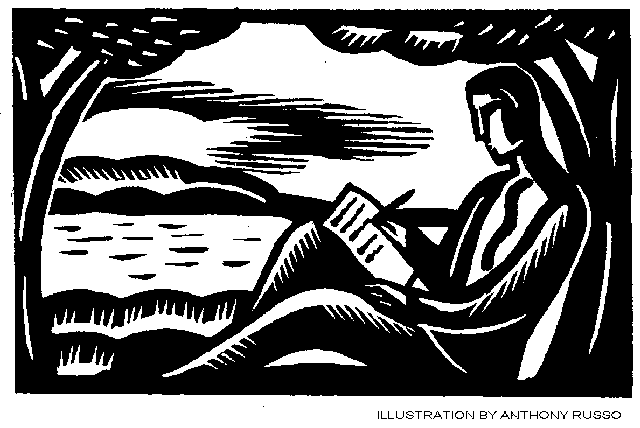Confession: I consider myself a loyal son of alma mater, but I usually just skim the quarterly Williams Alumni Review before tossing it into the recycling pile. A story in the June issue, however, caught my eye. “The Literary Environment,” by Denise DiFulco, is about the director of the college’s Center for Environmental Studies (CES), a Spanish professor named, confusingly, Jennifer French.
The article notes that a lot of people have asked French how a Spanish professor came to be named the director of the CES. The answer involves her first book, Nature, Neo-Colonialism, and the Spanish American Regional Writers (2005), which examined early twentieth century Latin American literary responses to European economic hegemony in the region. Or something like that. Explains French, “Often those writers, including Horacio Quiroga and José Eustasio Rivera, made central to their narratives the deleterious effects of agriculture and other industries.”
Sadly, I know next to nothing about Latin American literature, and I’d never heard of Quiroga or Rivera, but another quotation from the article really struck me: “At their best, environmental history, philosophy, religion, literary studies, and the like engage the underlying assumptions of environmental policy and environmental science.”
Exactly! I thought. This is a view that resonates profoundly with Heather and me—we are, after all, both English majors—and when we eventually begin accepting environmental writers for residencies at Madroño Ranch, we hope to cast as wide a net as possible.
Say the words “environmental writer” and I suspect that most people think of folks like Bill McKibben or William Cronon or Michael Pollan or David Quammen (all of whom happen to be heroes of ours): essayists or historians with a biological or agricultural bent. They, and many others like them, are among the most important writers we have, and we would be thrilled—thrilled—to have them, or their peers, as residents at Madroño. But we also hope to attract novelists and poets and philosophers and theologians and playwrights and screenwriters and memoirists and perhaps even (what the heck) bloggers—pretty much anyone who’s thinking and writing in creative ways about the land and those who have their being on it, and how they affect each other.
Think of the fiction of Wendell Berry, who (much as William Faulkner did in Mississippi) has created a complex and compelling imaginary landscape in Kentucky. (Apparently the American South is particularly suited to this sort of exercise.) Think of the novels of Willa Cather—Death Comes for the Archbishop is still my favorite—and Wallace Stegner, which depict the varied experiences of humans confronted with the vast spaces of the American West. Think of the poetry of Mary Oliver, in which the animal and vegetal and geological is a constant, almost sentient presence, and W. S. Merwin, described in the New York Times as “a fierce critic of the ecological damage humans have wrought.” Think of the economic writings of Paul Hawken and Woody Tasch, critiques of modern industrial capitalism’s obsession with short-term, bottom-line profit at the expense of just about everything else. Heck, think of David Winner’s odd little book Brilliant Orange: The Neurotic Genius of Dutch Football—one of my personal favorites—in which he examines how landscape has affected the style of soccer played in the Netherlands.
Closer to home, think of the gracious and elegant memoirs of John Graves and Roy Bedichek, two of the foundational texts of the environmental movement in Texas; or the beginning of The Path to Power, the first volume of Robert Caro’s epic three-volume biography of Lyndon Johnson, which is still the best short history of the Texas Hill Country I’ve ever read; or even Witold Rybczynski’s magisterial biography of Frederick Law Olmsted—not a Texan, but an astute observer of the state—which is a wonderful narrative summary of nineteenth-century American thought about nature in urban and suburban settings. Each of these works, I believe, has something original and important to say about community in America, community in this case defined as (to crib shamelessly from Pollan’s website) “the places where nature and culture intersect.”
We’d be pretty surprised to receive applications from Faulkner, Cather, Stegner, or Bedichek, since they’re, well, dead. But would the rest of them want to come to Madroño Ranch? Well, why not? We hope that the offer of beautiful and rugged surroundings, free from distraction, in which to ponder and dream and focus and unfocus (and eat well, of course; let’s not forget eating well) and bounce ideas off peers, will prove irresistible. Are we aiming high? Of course; but if you don’t aim high, you’ll just keep hitting the ground, right? Who knows—maybe Jennifer French herself will want to come. According to the article, she’s already working on her next book, a study of how memories of the War of the Triple Alliance (fought between Paraguay and the combined forces of Argentina, Brazil, and Uruguay from 1864 to 1870) have influenced attitudes toward land use in Paraguay. Wouldn’t that be cool?
What we’re reading
Heather: Laurie King, Touchstone
Martin: Paul Hawken, The Ecology of Commerce: A Declaration of Sustainability (still)


I once heard someone say in a speech to a bunch of new managers at my former place of employment, "Never tell people to reach for the mountaintop. If you fall while you’re reaching for the mountaintop, it is a long and bumpy ride to the bottom. Tell people to reach for the stars. If you fall while reaching for the stars, you just might land on a mountaintop.” So dream big, you two! Climb high, climb far, etc. etc. etc.
Oh, I would LOVE to come. Sign me up. Um, except, could you absorb my children somehow, too? I am so thrilled to see references to Stegner, who is a bit of a muse to me. Always wonderful to find others who know his work well.
Jen, we'd love to have you. Unfortunately, we're not set up for child care. Do you think they can wrangle bison? Stegner is pretty awesome; Angle of Repose is still my favorite.